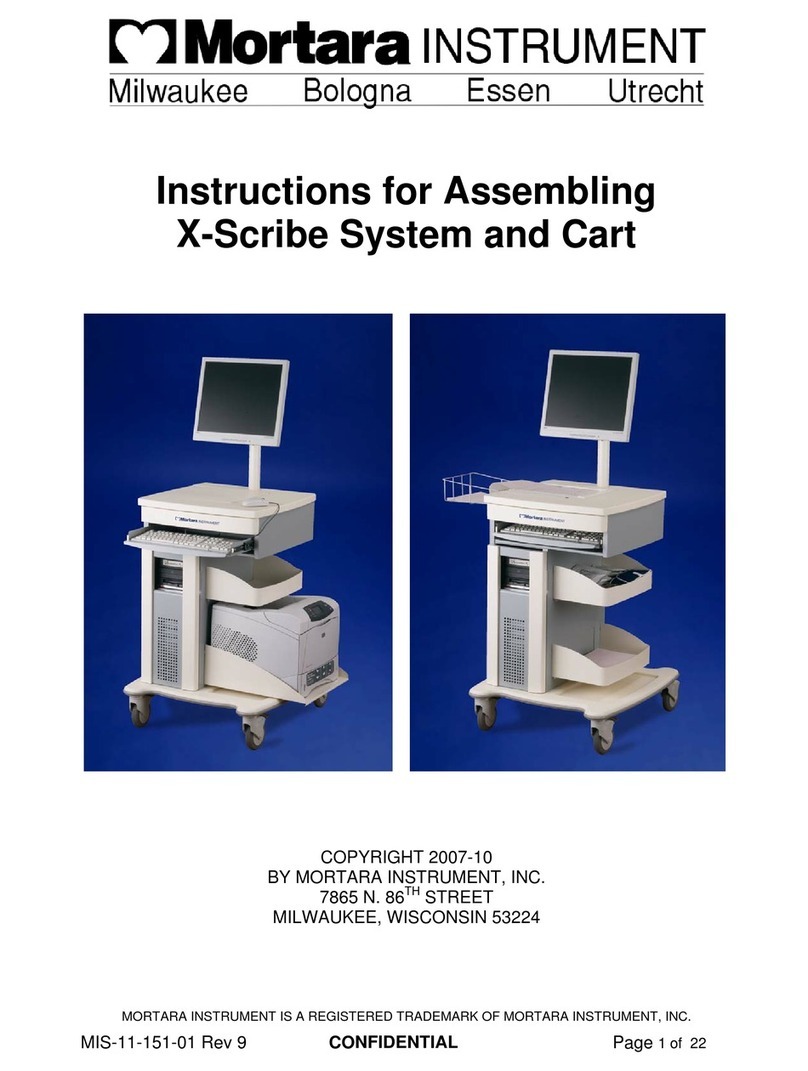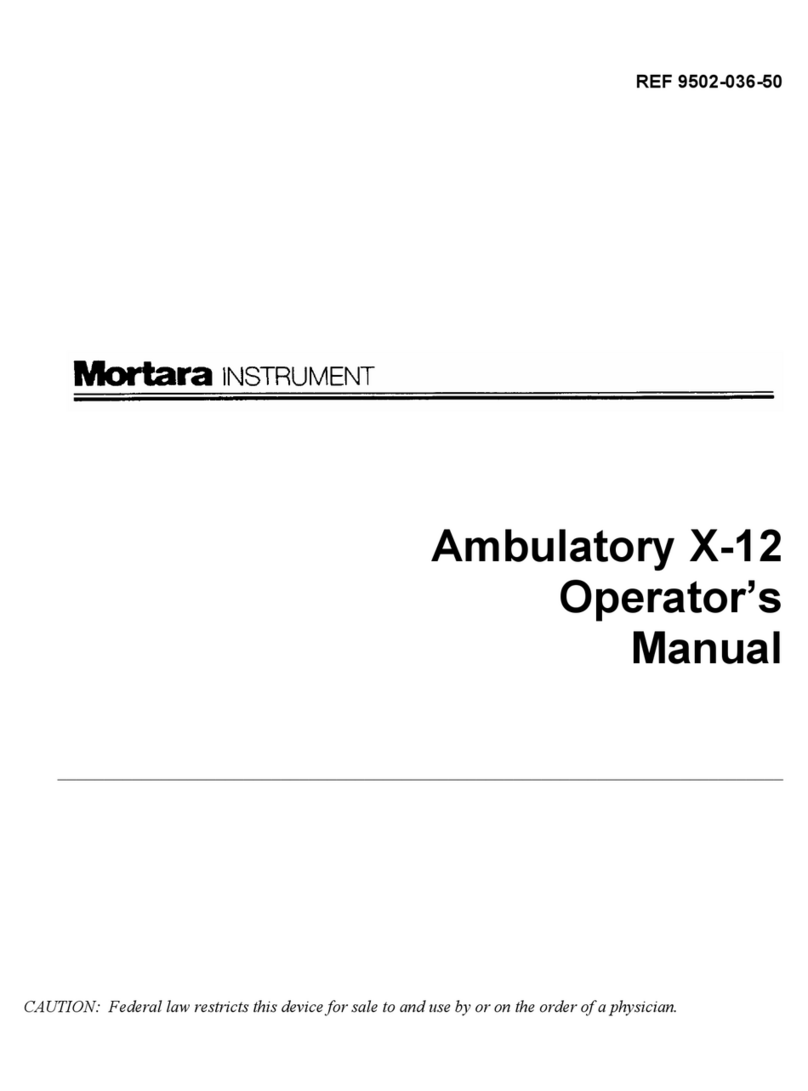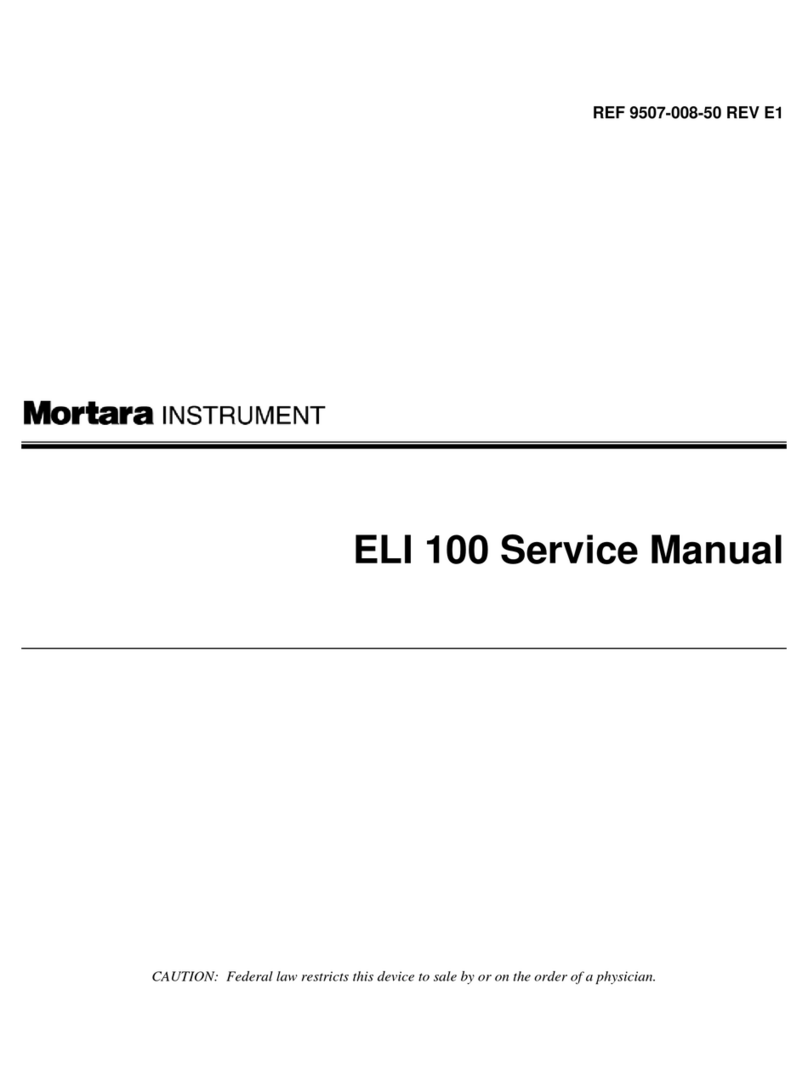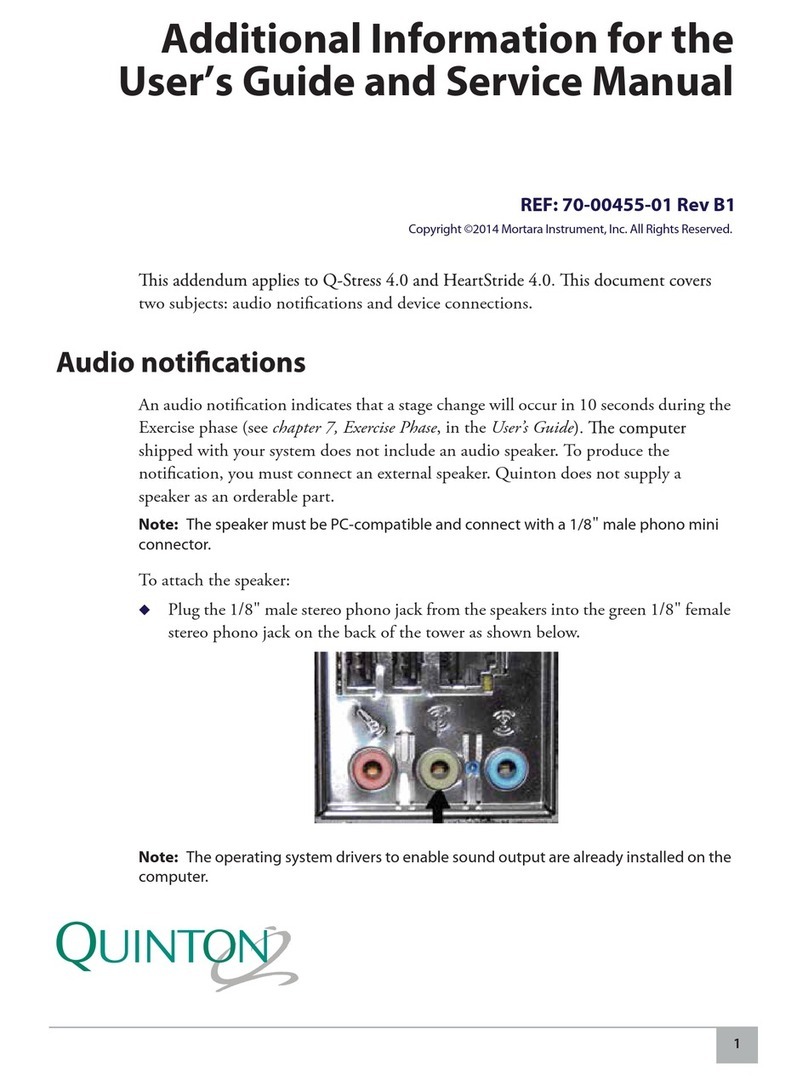Your Mortara Warranty
MORTARA INSTRUMENT, INC. (hereinafter referred to as “Mortara”) hereby warrants that Mortara
products (hereinafter referred to as “Products”) shall be free from defects in material and workmanship under
normal use, service and maintenance for the warranty period of such Product from Mortara or an authorized
distributor or representative of Mortara. Normal use, service and maintenance means operation and
maintenance in accordance with appropriate instructions and/or information guides. This Warranty does not
apply to damage to the Products caused by any or all of the following circumstances or conditions:
a) Freight damage;
b) Parts and/or accessories of the Products not obtained from or approved by Mortara;
c) Misapplication, misuse, abuse and failure to follow the Product instruction sheets and/or information guides;
d) Accident, a disaster affecting the Products;
e) Alterations or modifications to the Products not authorized by Mortara;
f) Other events outside of Mortara’s reasonable control or not arising under normal operating conditions.
THE REMEDY UNDER THIS WARRANTY IS LIMITED TO THE REPAIR OR REPLACEMENT
WITHOUT CHARGE FOR LABOR OR MATERIALS, OR ANY PRODUCTS FOUND UPON
EXAMINATION BY MORTARA TO HAVE BEEN DEFECTIVE. This remedy shall be conditioned upon
receipt of notice by Mortara of any alleged defects promptly after discovery thereof within the warranty period.
Mortara’s obligations under the foregoing warranty will further be conditioned upon the assumption by the
purchaser of the Products (i) of all carrier charges with respect to any Products returned to Mortara’s principal
place or any other place as specifically designated by Mortara or an authorized distributor or representative of
Mortara, and (ii) all risk of loss in transit. It is expressly agreed that the liability of Mortara is limited and that
Mortara does not function as an insurer. A purchaser of a Product, by its acceptance and purchase thereof,
acknowledges and agrees that Mortara is not liable for loss, harm or damage due directly or indirectly to an
occurrence or consequence therefrom relating to the Products. If Mortara should be found liable to anyone
under any theory (except the expressed warranty set forth herein) for loss, harm or damage, the liability of
Mortara shall be limited to the lesser of the actual loss, harm or damage, or the original purchase price of the
Product when sold.
EXCLUDED FROM THE LIMITED WARRANTY SET FORTH ABOVE ARE CONSUMABLE ITEMS
SUCH AS PAPER, BATTERIES, ELECTRODES, PATIENT CABLES, LEAD WIRES AND MAGNETIC
STORAGE MEDIUMS.
EXCEPT AS SET FORTH HEREIN WITH RESPECT TO REIMBURSEMENT OF LABOR CHARGES,
A PURCHASER’S SOLE EXCLUSIVE REMEDY AGAINST MORTARA FOR CLAIMS RELATING TO
THE PRODUCTS FOR ANY AND ALL LOSSES AND DAMAGES RESULTING FROM ANY CAUSE
SHALL BE THE REPAIR OR REPLACEMENT OF DEFECTIVE PRODUCTS TO THE EXTENT THAT
THE DEFECT IS NOTICED AND MORTARA IS NOTIFIED WITHIN THE WARRANTY PERIOD. IN
NO EVENT, INCLUDING THE CLAIM FOR NEGLIGENCE, SHALL MORTARA BE LIABLE FOR
INCIDENTAL, SPECIAL OR CONSEQUENTIAL DAMAGES, OR FOR ANY OTHER LOSS, DAMAGE
OR EXPENSE OF ANY KIND, INCLUDING LOSS OF PROFITS, WHETHER UNDER TORT,
NEGLIGENCE OR STRICT LIABILITY THEORIES OF LAW, OR OTHERWISE.THIS WARRANTY IS
EXPRESSLY IN LIEU OF ANY OTHER WARRANTIES, EXPRESS OR IMPLIED, INCLUDING, BUT
NOT LIMITED TO THE IMPLIED WARRANTY OF MERCHANT ABILITY AND THE WARRANTY
OF FITNESS FOR A PARTICULAR PURPOSE.
WARRANTY INFORMATION
iii
































